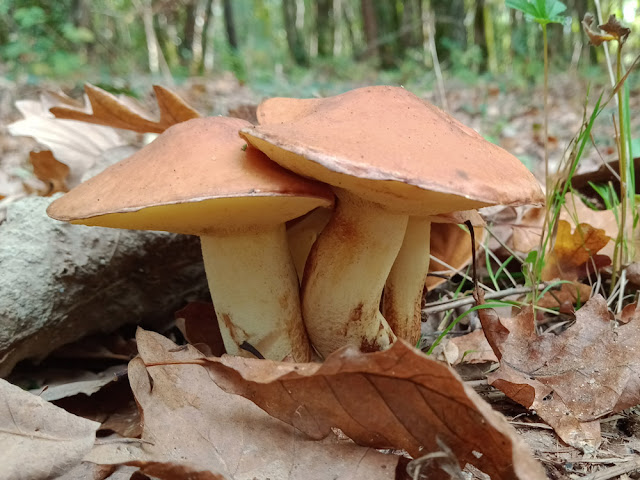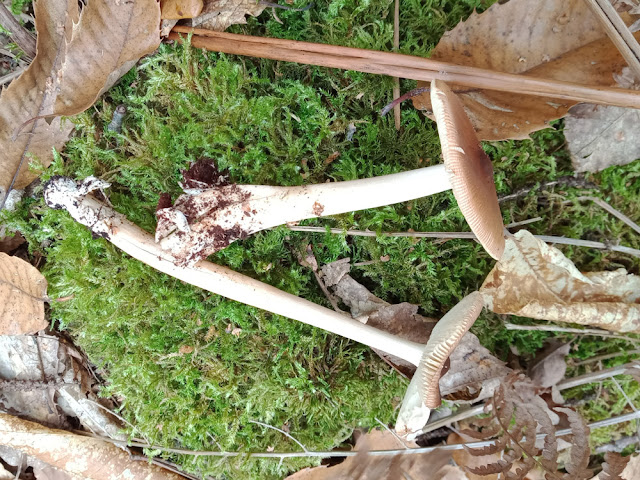On Saturday 29 October 2022 the Association de botanique et de mycologie de Sainte Maure de Touraine held a fungi foray near Séligny, led by my friend Jean.
 |
| Jean begins the foray with an introductory chat about mushrooms and foraging best practice. On these outings the idea is to collect all species so we are surveying the site. |
 |
| Jean was very pleased when I found a Bitter Bolete Tylopilus felleus (Fr. Bolet amer) as it is a first record of this species on the site, but you don't want it mixed up with your ceps. |
 |
| Michel foraging. |
 |
| A Deathcap Amanita phalloides (Fr. Amanite phalloïde) on my field notebook. |
 |
| A proud newbie with a bolete she has found. |
 |
| Trumpet Chanterelle Craterellus tubaeformis (Fr. Chanterelle en tube), which Jean considers to be the best of all the edible mushrooms. [Update: these ones are the closely related Yelowfoot C. lutescens.] |
 |
| Velvet Rollrim Tapinella atrotomentosa (Fr. Paxille à pied noir), the biggest mushroom found on the day, and to my mind, the star species. |
 |
| Deathcap Amanita phalloides (Fr. Amanite phalloïde), the mushroom that kills more people than any other in France. |
 |
| Weeping Bolete Suillus granulatus (Fr. Bolet granulé), abundant and always associated with pine trees. |
 |
| Showing the red layer on the horizon between the flesh of the cap and the tubes of a Lurid Bolete Suillelus luridus (Fr. Bolet blafard). This is how you tell this inedible species from the very similar edible Scarletina Neoboletus erythropus (Fr. Bolet à pied rouge). |


No comments:
Post a Comment